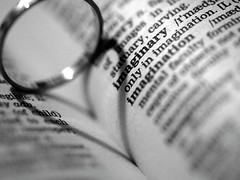A common misconception of shadows is that they must be binary, producing images comprising only black and white areas.
The following figures are adapted (with some conceptual changes) from a patent application I filed while employed at General Electric (US 20080037709A1: METHOD AND SYSTEM FOR CONTROLLING RADIATION INTENSITY OF AN IMAGING SYSTEM). The invention uses shadows from superposed opaque gratings to control the spatial distribution of x-ray radiation intensities in an x-ray beam.
First, we produce two gratings comprising curved opaque bars:

Then, we superpose them with some distance separating them and shine light through them at different angles as shown:

The bars are curved so that the same two gratings together cast shadows containing two different detailed images (not just contours):

Yet, this is not the whole story. If the light comes not from a point source but from a somewhat diffuse source (e.g. the sun), then the shadow will be blurred somewhat by
penumbra or half-shadows producing a full-grayscale image:

The blur removes the sharp edges and, paradoxically, improves the images. Notice for example the wrinkles on Albert's face that only come through after the images has been blurred.
Another way to achieve blurring is to rapidly shake the gratings perpendicularly to the bars. Motion blur will then remove the sharp edges from the image producing a similarly smooth image.
You can print the gratings in
(a) and
(b) on transparencies and superpose them with slight offsets to see the effect for yourselves.
What if such gratings are built as sculpture pieces or are integrated into the facade of a building or as sundials that would cast various artistic shadows at various times of the day at various seasons? What do you think?




















